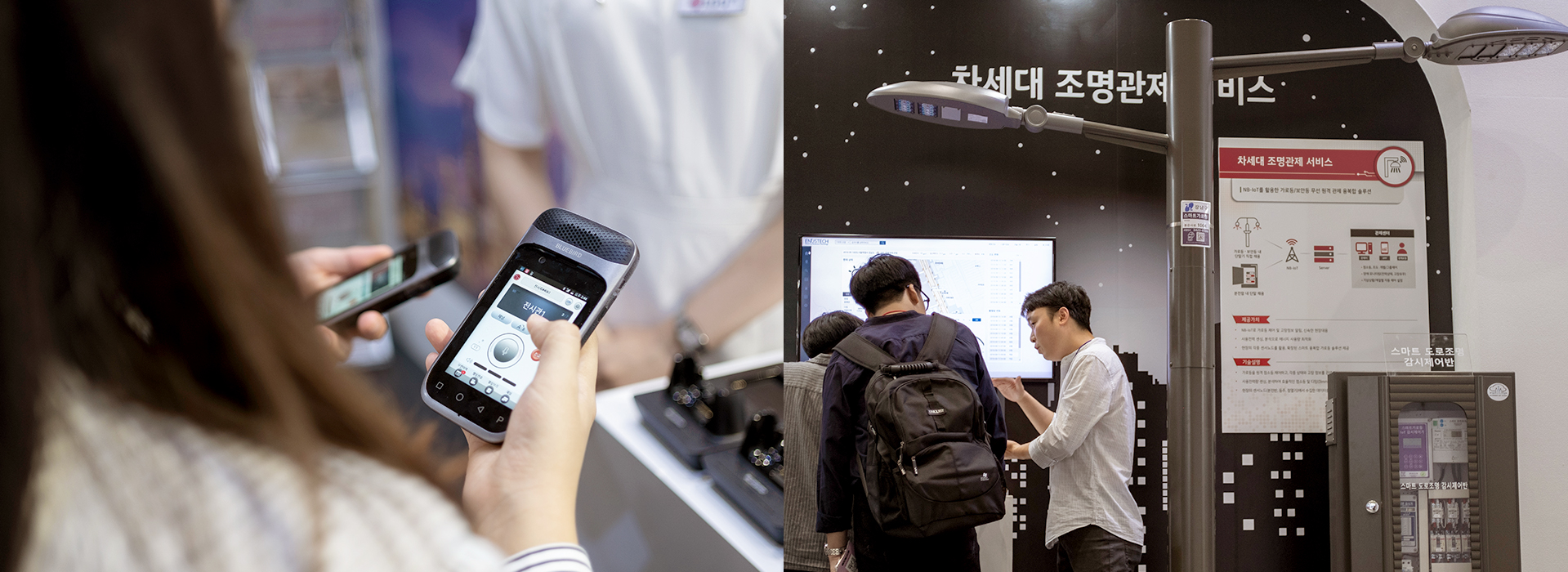
VOL.45 · October 31 · 2018
Trip
Idea Becoming Reality through IoT
IoT Korea Exhibition & International Conference 2018
“More amiable and more human!”
AI objects, featured in「A World Too Good for Me」, a short novel by Bernard Werber, are designed and built on this philosophy. These objects do cleaning and laundry and prepare meals while never stopping talking. Such imaginations are no longer new to us. Numerous films and novels have already featured objects becoming more and more like humans and have made reasonable predictions that such objects will fundamentally change the way we live. The prediction is becoming reality. The IoT Korea Exhibition & International Conference 2018 was held this year as well, and a vision of the future of the IoT, which has already become part of our lives, unfolded.
01
IoT Seeping Deeply into Life and Industry
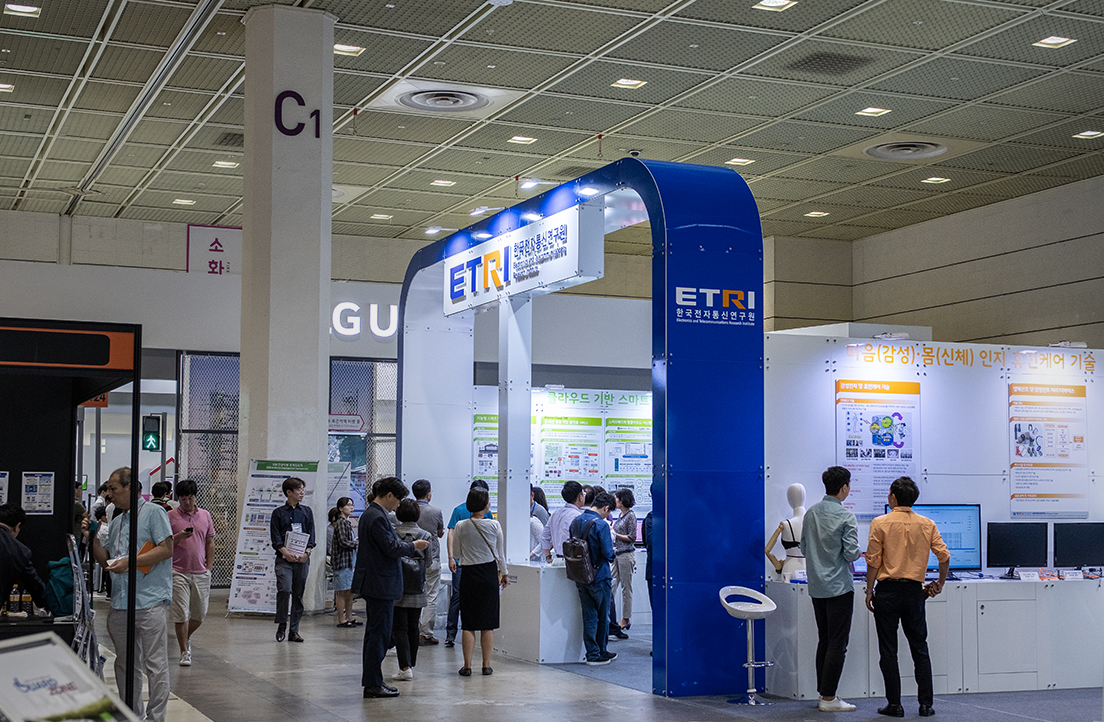

IoT Week Korea, which started in 2014, is an annual event hosted by the Ministry of Science and ICT in efforts to promote IoT-based convergence and enhance national competitiveness in the field. The event is held every year and lasts for two weeks, implementing various programs, such as the IoT Korea Exhibition, IoT International Conference, and IoT Show Case.
As part of IoT Week Korea, the IoT Korea Exhibition & International Conference 2018 was held, at which a variety of IoT services and products, dedicated to individuals, households, public services, industrial sites, and various other fields, were showcased. Under this year’s theme of “IoT Technology and Services are Becoming a Reality,” over 200 institutions and businesses presented IoT technologies that will make their way to our daily lives going forward. The exhibition was a huge success, with visitors desiring to have a glimpse of the future of the IoT ahead of others.
Visitors walking in the exhibition area could hear voices from all over the place, made by AI objects. Those were mainly the voices of AI speaker products, which are now widely used in many homes. These AI speakers were impressive because they were able to naturally converse with people and take specific actions accordingly, going beyond simply giving information to users. The country’s three major communications companies, which had been proactively participating in the IoT industry based on their advanced IoT technology, draw substantial attention with their biotech, healthcare, factory, safety, and smartphone solutions, as well as their phone, Internet, and AI speaker technologies.
Aside from these, domestic and international medium enterprises and SMEs made their presence felt by showcasing IoT technologies intended for various fields, while showing to the world their competitive edge. Various technologies were presented and, among them, what caught visitors’ eyes most were ones designed to make life easier and safer for everyone, rather than those simply providing convenience. Notably, substantial attention was paid to technologies capable of detecting accident risks and automatically responding to accidents that have already occurred.
Watching the demonstration of those technologies reminded us again that IoT was already here with us, seeping deeply into our lives. That is to say, imagination is becoming a reality through IoT technologies that underpin the Fourth Industrial Revolution.

02
ETRI, Making Life One Step Safer and Easier
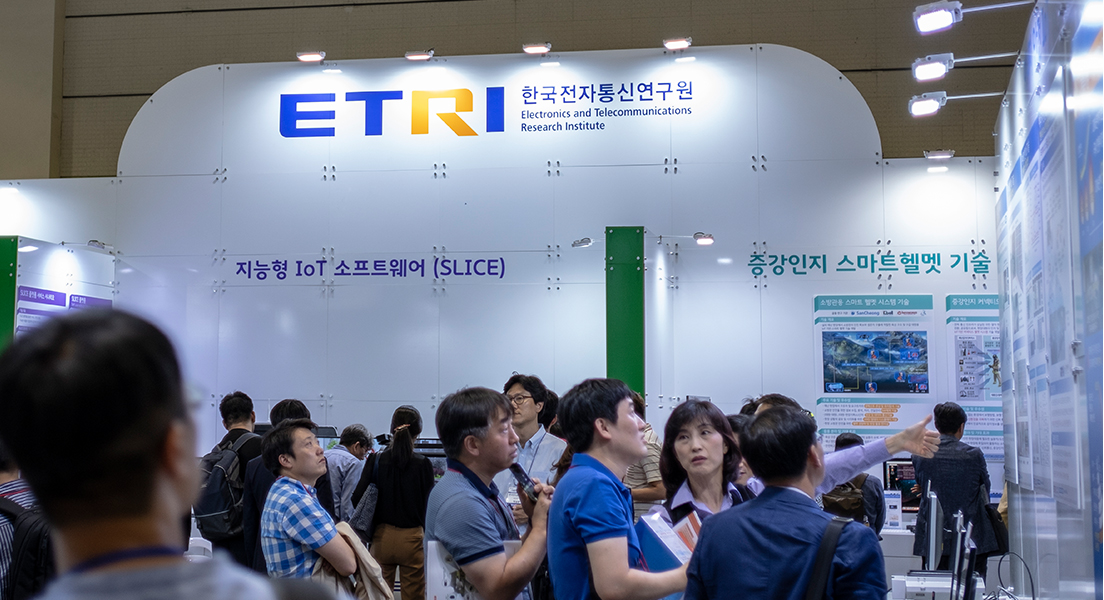
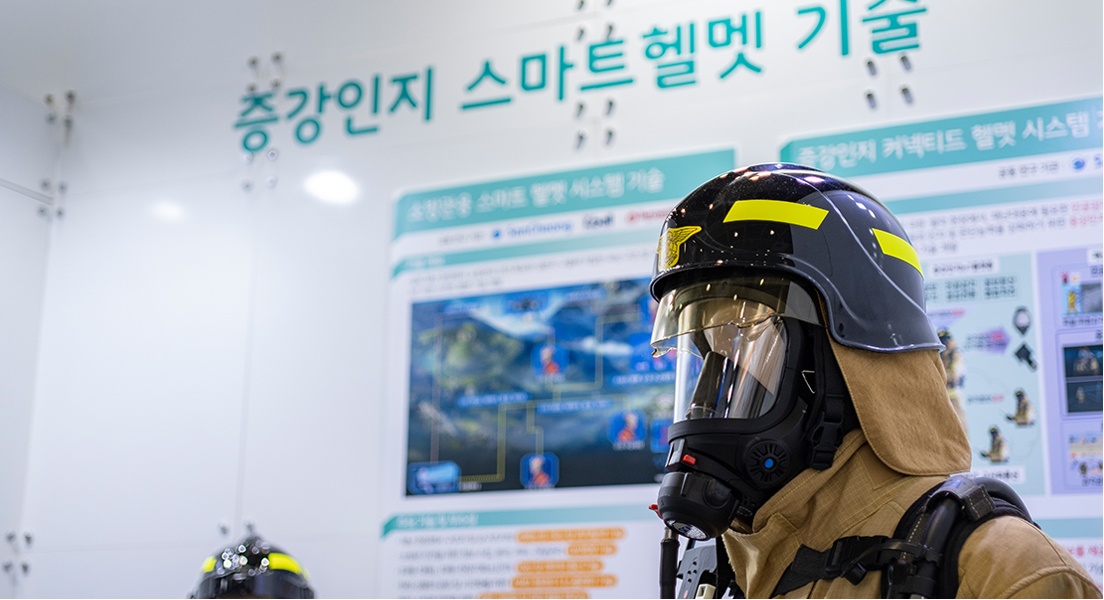
As a technology leader in IoT solutions aiming to actualize a hyper-connected intelligence society, ETRI also made major contributions to the exhibition. As a joint organizer, the institute presented IoT technologies in eight fields, including platform technology, which is the essence of smart IoT solutions, disaster and safety solutions, and industrial and everyday services.
As a major platform technology, the Self-Learnable IoT Common S/W Engine (SLICE) was introduced, software capable of collecting and analyzing behavioral information and data between objects and humans and thus achieving optimized control over those objects. A car simulation platform was set up in ETRI’s booth, in which visitors were allowed to have a first-hand experience of SLICE. The software demonstrated its ability to recognize users’ activities and control objects in the car accordingly, which attracted significant attention from visitors.
Knowledge-converged Super Brain (KSB) is also a major platform technology, serving as a service development environmental tool for AI service development using IoT. The technology makes it easier for users to develop new AI services. Over the entire course of the exhibition, questions about the KSB were continuously being asked by those working in the AI service sector.
As for disaster and safety solutions, three technologies were presented. First, the Energy Safety IoT Technology is a system designed to collect and analyze potential risks, such as gas leakage or current leakage. By doing so, it can predict the occurrence of any possible accidents, for example, at traditional markets or underground shopping arcades. A while ago, public concerns were raised over a series of accidents occurring at markets. The application of the system across the country will significantly reduce such accidents. Smart Fire-fighting Helmet Technology, which was presented last year, was exhibited again this year, still catching the eyes of many visitors, as well as the media. The smart helmet is designed to allow location search, image and data communication, real-time sharing of on-site conditions, and data visualization based on bio-signals. The technology will help firefighters save lives more quickly and safely.
The remote vessel identification system also attracted substantial interest from visitors. This system identifies vessels at a distance using low-power long-distance IoT communications technology. It will enable the use of long-distance communications even in severe marine environments, thereby ensuring more systematic monitoring of illegal fishing.

03
Establishing a Next-generation IoT Technology Paradigm
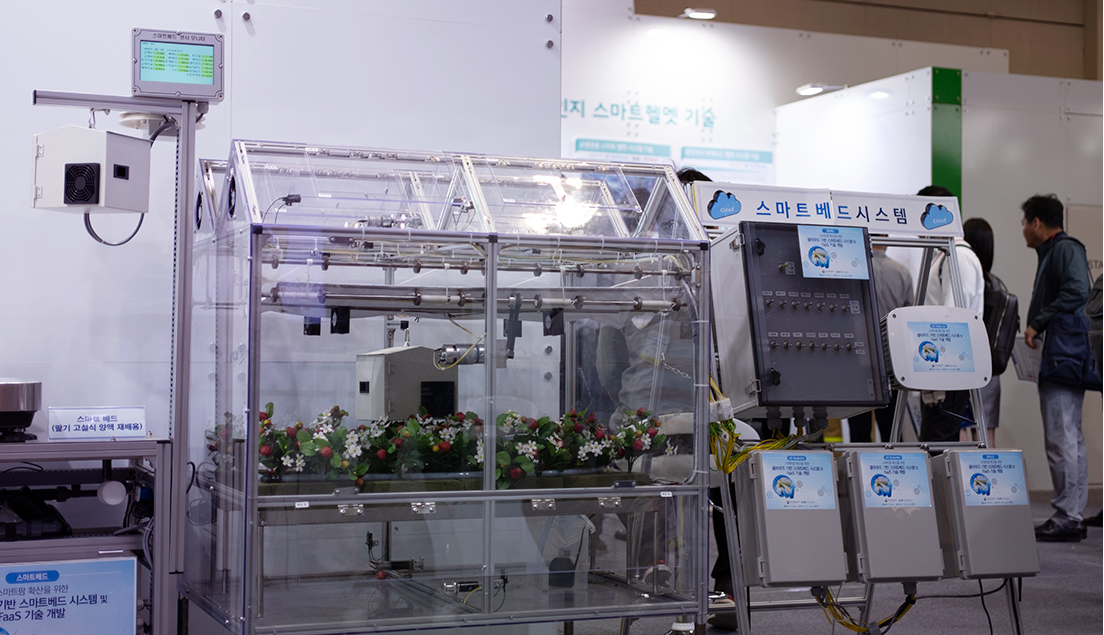
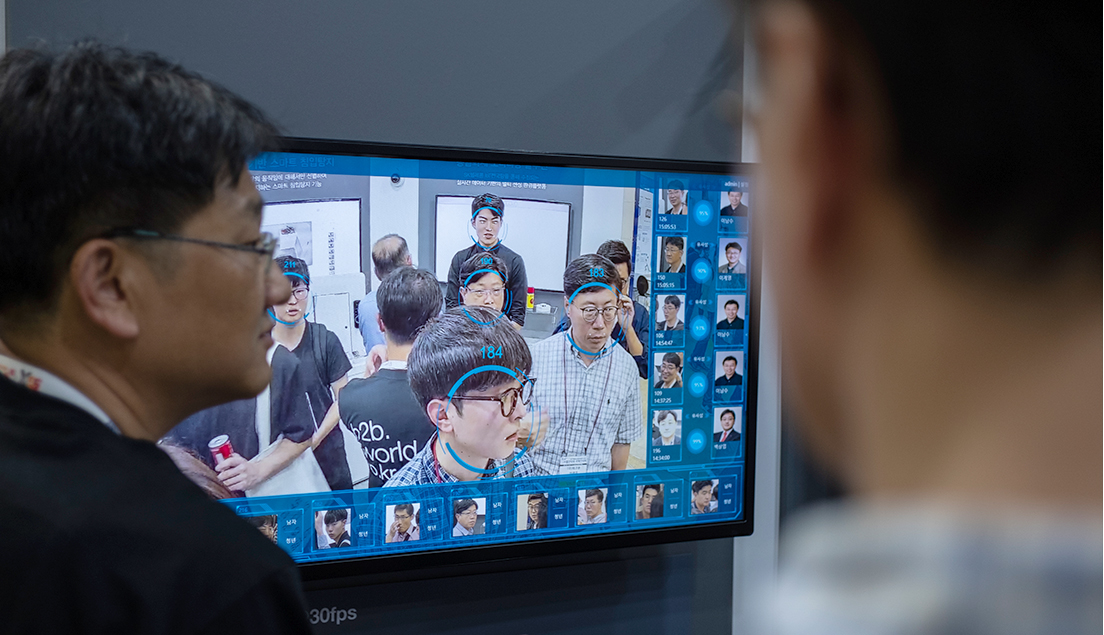
In the industrial and everyday service sectors, ETRI presented its accumulated exchange and sharing solutions intended for new IoT technologies. Cloud-based Smart Farm IoT Service is a next-generation agro-livestock technology based on IoT and the cloud; it is composed of smart farm services suitable for small- and medium-sized greenhouses, the international standard GS1-based big data analysis platform associated with manufacturing and distribution, and smart pigsty technology capable of protecting against livestock diseases.
Smart Energy IoT Technology is designed to collect and manage distributed energy resources and facilitate power market trading, which attracted many visitors. Health and Emotion Recognition Human Care Technology was also very popular; this technology is capable of recognizing the physical and emotional status of users based on their bio-signals, transmitted from devices that users are wearing.
On the occasion of the R&R Business Agreement, jointly attended by ETRI and 25 other government-funded research institutes, a group of these institutes clearly established their common goals of “Future Digital Technology Development” and “Country Intellectualization.” Various next-generation IoT technologies presented in the exhibition will serve as a major stepping stone for ETRI to fulfill those R&Rs, provided that ETRI researchers continue to make their way through research and development to the destination and, in the meantime, never forget their main goal of making life one-step easier and safer.
